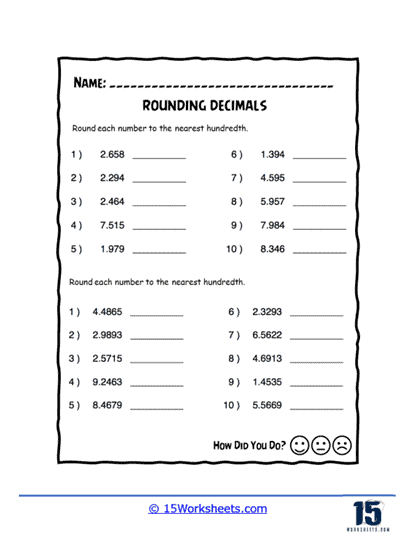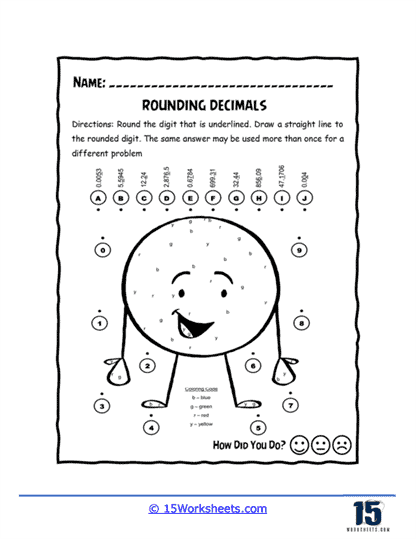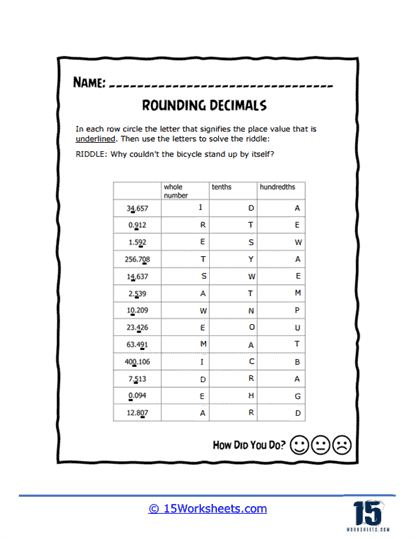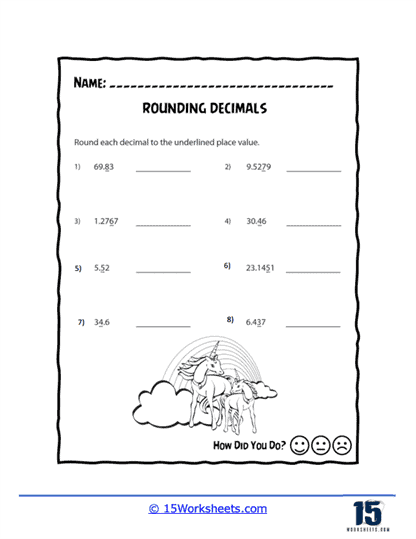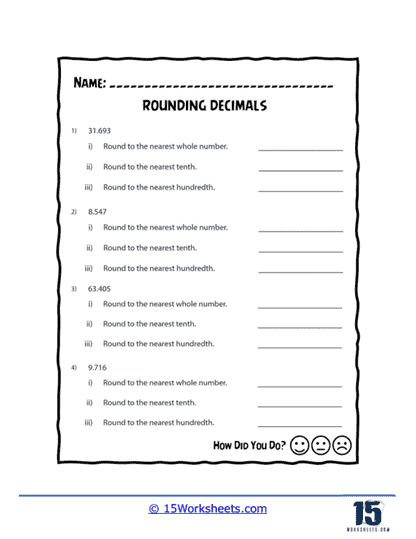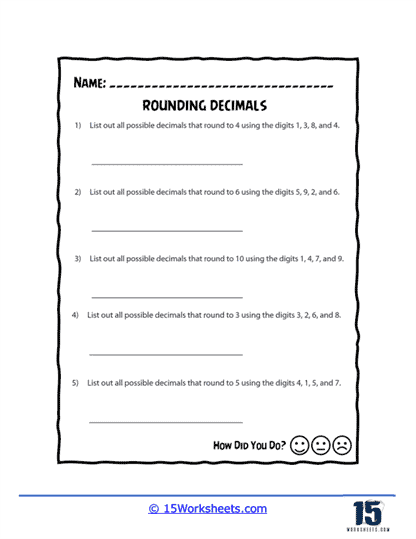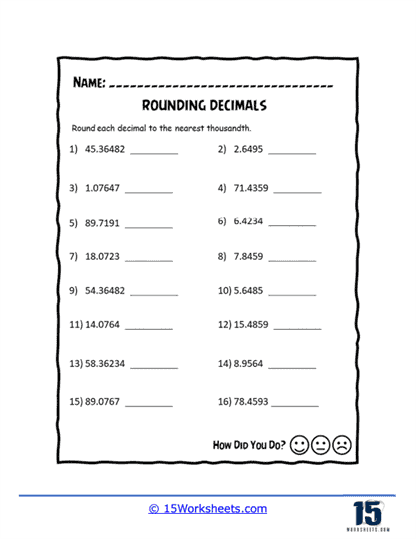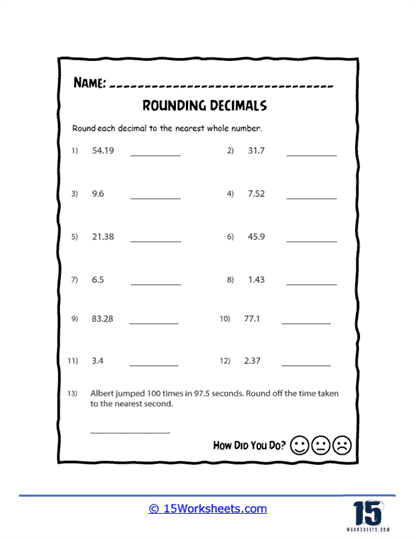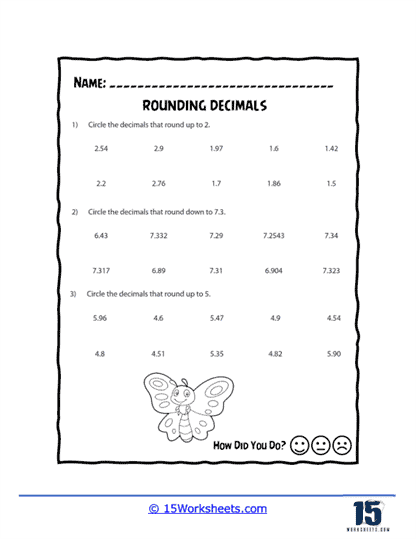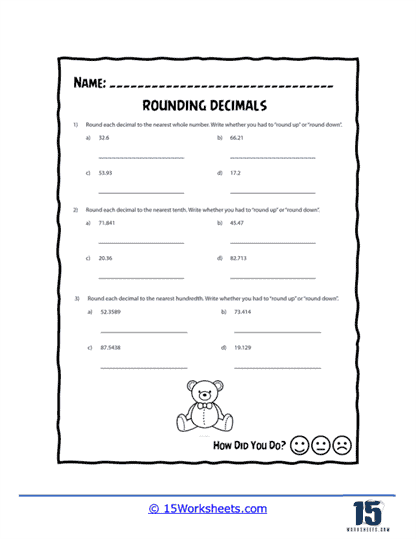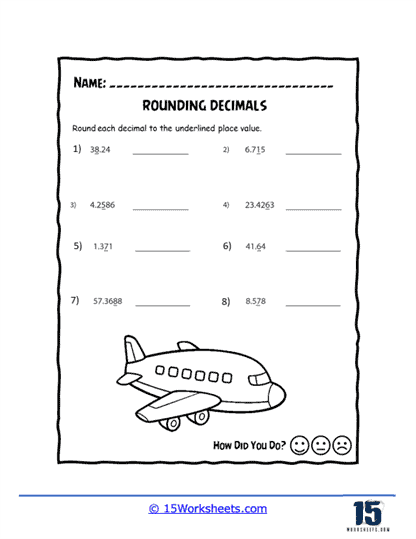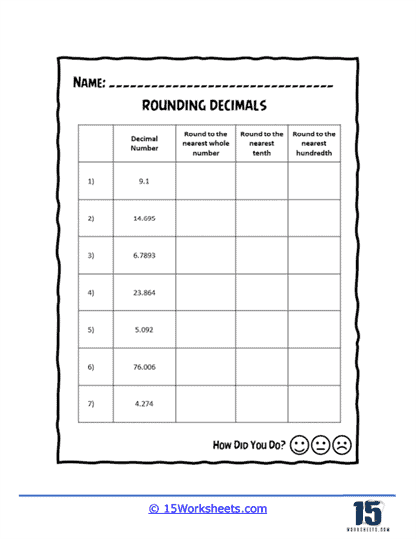Rounding Decimals Worksheets
All About These 15 Worksheets
These Rounding Decimals worksheets are designed to help students master the concept of rounding decimal numbers. The worksheets include a variety of creative and engaging exercises to help students build their skills and confidence in rounding decimals.
Each worksheet in the series includes a mix of problems with varying degrees of difficulty, designed to challenge and engage students at different skill levels. The problems require students to round decimal numbers to the nearest whole number, tenth, hundredth, or thousandth.
This series is most suitable for students in grades 4 to 6. It can be used in the classroom as a supplement to the math curriculum or at home as a way for parents to help their children practice and reinforce their math skills.
Overall, these Rounding Decimals worksheets provide a comprehensive and engaging way for students to develop their skills and confidence in rounding decimal numbers. With these worksheets, students can build a solid foundation in math and develop the skills they need to succeed in higher-level math courses.
How to Round Decimals
To round a decimal number, you need to identify the desired decimal place to which you want to round the number. Here’s a step-by-step guide to rounding a decimal number that teachers can share with their students.
- Identify the rounding place: Determine the decimal place to which you want to round the number. For example, if you want to round the number to the nearest tenth, the rounding place will be the first digit after the decimal point.
- Look at the digit to the right: Check the digit immediately to the right of the rounding place. This digit will determine if you need to round up or down.
- Round up or down: If the digit to the right of the rounding place is 5 or greater, round up. This means you will add 1 to the digit in the rounding place. If the digit to the right of the rounding place is 4 or smaller, round down. This means you will keep the digit in the rounding place as it is.
- Remove extra decimal places: After rounding up or down, remove any extra decimal places to the right of the rounding place.
- Let’s look at an example:
- Round 3.1468 to the nearest hundredth (second decimal place).
- Identify the rounding place: The second decimal place is the digit 4 (3.1[4]68).
- Look at the digit to the right: The digit to the right of the rounding place is 6 (3.14[6]8).
- Round up or down: Since the digit to the right (6) is 5 or greater, we round up. Add 1 to the digit in the rounding place (4), resulting in 5.
- Remove extra decimal places: Remove the extra decimal places, leaving only two decimal places (3.15). The rounded number is 3.15.
Why Is This Skill Important?
Rounding decimals is a common practice for several reasons, including simplifying calculations, making numbers easier to understand, and obtaining approximate values. Here are some key reasons why we round decimals:
- Simplification – Rounding decimals can make calculations simpler and quicker, especially when working with long decimals or performing mental math. By rounding, we can obtain a close approximation without dealing with cumbersome numbers, making arithmetic more manageable.
- Ease of understanding – Rounded numbers are often easier to comprehend, interpret, and communicate. For example, when sharing numerical information, rounded values can be more accessible to a broader audience because they are less complex and easier to remember.
- Practicality – In real-life situations, exact values are often unnecessary or even unattainable. Rounding decimals allows us to obtain an approximate value that is suitable for practical purposes. For example, when measuring a physical object, the precision of the measuring instrument is usually limited, so rounding to an appropriate decimal place is more practical and accurate.
- Estimation – Rounding decimals is a useful tool for estimating outcomes and making quick judgments. In many cases, having a close approximation is sufficient for decision-making, problem-solving, or predicting outcomes.
- Error minimization – When working with data that has inherent uncertainties or errors, rounding to an appropriate number of decimal places can minimize the propagation of errors in calculations or measurements.
- Compliance with standards – In some industries or professions, specific rules or standards dictate the number of decimal places to which calculations should be rounded. Rounding decimals ensures compliance with these standards and maintains consistency across various applications.
Overall, rounding decimals is a practical and essential skill in mathematics, science, finance, and many other fields. It simplifies calculations, facilitates communication, and provides appropriate approximations for real-life situations.

